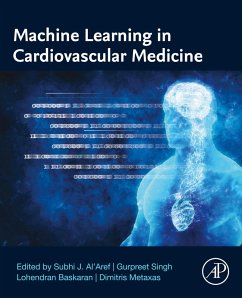
Translational Cardiology (eBook, ePUB)
Versandkostenfrei!
Sofort per Download lieferbar
104,95 €
inkl. MwSt.
Weitere Ausgaben:

PAYBACK Punkte
52 °P sammeln!
Translational Cardiology provides a cardiology-specific instructional guide to translational medical research that will serve as a practical, step-by-step roadmap for taking a biomedical device, potential therapeutic agent, or research question from idea through demonstrated clinical benefit. Fundamentally, the volume aims to help bridge the gap between current research and practice. Written by a team of expert medical, biomedical engineering, and clinical research experts in cardiology, this book provides a clear process for understanding, designing, executing, and analyzing clinical and tran...
Translational Cardiology provides a cardiology-specific instructional guide to translational medical research that will serve as a practical, step-by-step roadmap for taking a biomedical device, potential therapeutic agent, or research question from idea through demonstrated clinical benefit. Fundamentally, the volume aims to help bridge the gap between current research and practice. Written by a team of expert medical, biomedical engineering, and clinical research experts in cardiology, this book provides a clear process for understanding, designing, executing, and analyzing clinical and translational research. - Focuses on translational cardiovascular research, covering the principles of evidence-based medicine and applies these principles to the design of translational investigations - Provides a practical, straightforward approach that will help aspiring cardiovascular researchers navigate challenging considerations in study design and implementation - Details valuable discussions of the critical appraisal of published studies in cardiology, allowing the reader to learn how to evaluate the quality of such studies with respect to measuring outcomes and to make effective use of all types of evidence in patient care
Dieser Download kann aus rechtlichen Gründen nur mit Rechnungsadresse in A, B, BG, CY, CZ, D, DK, EW, E, FIN, F, GR, HR, H, IRL, I, LT, L, LR, M, NL, PL, P, R, S, SLO, SK ausgeliefert werden.













